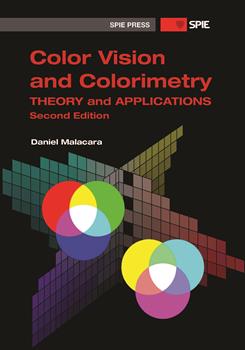|
While the human eye has been the subject of interest by many researchers for several centuries, the first serious studies were carried out by von Helmholtz (1924), as described in his book, Handbuch der Physiologischen Optik. The eye studies in the nineteenth century culminated with the work by Gullstrand (1909). Recent developments on the eye, its color processing mechanisms, physiology, and anatomic components have been published in many books, for example by Hubel (1995), Kaiser and Boynton (1996), Rodieck (1998), Schwartz (2004), and Chalupa and Werner (2004). An interesting description of the eye's evolution in primates has been published by Jacobs and Nathans (2009). A diagram of human eye anatomy is presented in Fig. 3.1. The main optical constants for an average adult are given in Table 3.1. The most important optical components of the eye are: (a) The cornea. This is the front transparent tissue in the eye. Its normal ideal shape is nearly spherical, with a dioptric power of about 43 diopters. Any deviation from its ideal shape produces refractive errors. If it takes on a toroidal shape, with different curvatures along two mutually perpendicular diameters, corneal astigmatism appears. The astigmatism is said to be with the rule if the curvature in the vertical diameter is larger than in the horizontal diameter and against the rule if otherwise. A small protuberance and thinning at the center makes the cornea have an almost conical shape, in a defect called keratoconus. These errors are measured with an ophthalmometer or a corneal topographer. |
|
|


